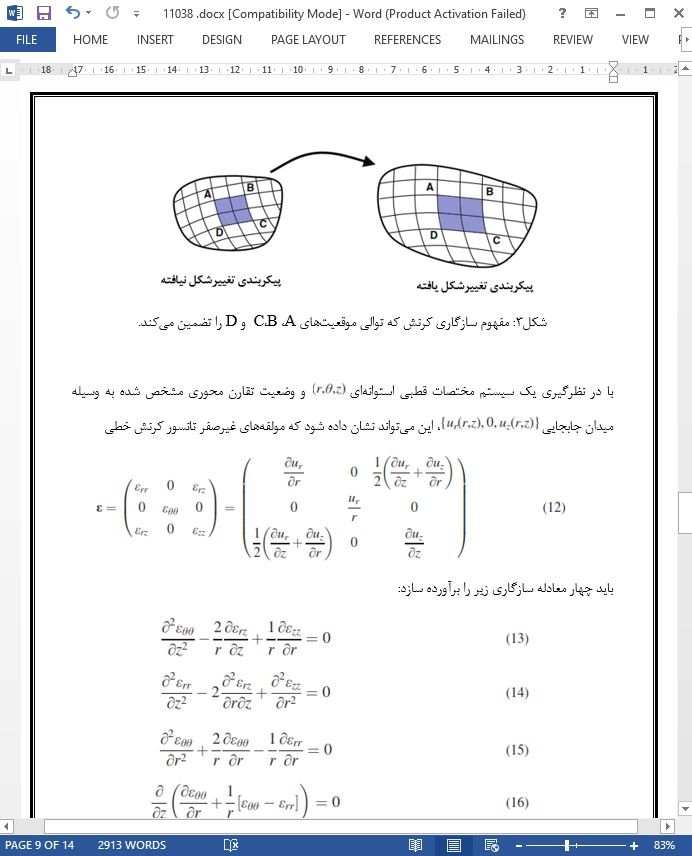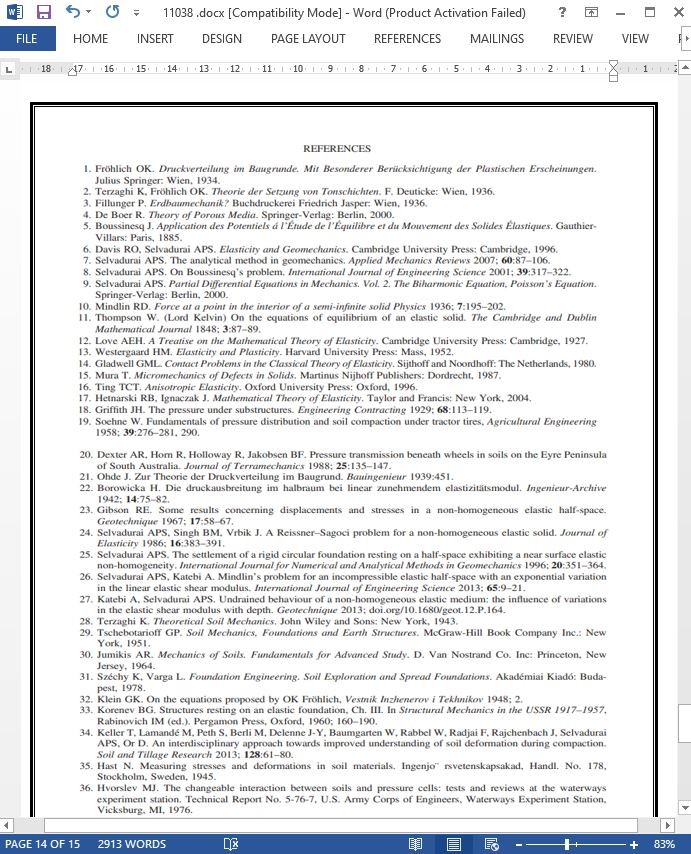
درباره راه حل فرولیک برای مسئله بوسینسک
خلاصه
فاکتور تمرکز معرفی شده توسط او.کی. فرولیک به عنوان یک رویه برای بررسی الگوی انتقال بار از بارهای سطحی به داخل ژئومواد مجسم شده است. جزئیات تاریخچه که منجر به معرفی فاکتور تمرکز شده اند، ناکافی هستند اگرچه این جزئیات به طور گسترده در حوزه مسائل مکانیک خاک همراه با تراکم خاک ناشی از کشت و زرع مورد استفاده قرار گرفتند. هدف این نوشته بررسی فاکتور تمرکز از نظر ژئومکانیک یک پیوستگی الاستیک و برای شناسایی شرایط دقیق است که توزیع تنش و کرنش برآورده کردند که سبب سازگار با فاکتور تمرکز هستند.
1-مقدمه
اوتو کارل فرولیک (1885 تا 1964) به تحصیل مهندسی در دانشگاه فنی گراتس پرداخت و درجه دکتری خود را در مهندسی در سال 1911 دریافت کرد. او در برلین، پترزبورگ، آمستردام و در لاهه از سال 1934 تا 1935 کار کرد. کتاب او با عنوان «توزیع فشار در خاک زیرسطحی، با توجه خاص روی پدیده پلاستیک» [1] در سال 1934 در طول اقامت او در Gravenhage، هلند، چاپ شد و به استاد او به نام ای. فوپل اهدا شد. در سال 1935، او توسط کارل ترزاقی برای تصدی منصب سخنران دعوت شد و به عنوان پروفسور مکانیک خاک و مهندسی ژئوتکنیک در دانشگاه فنی وین در سال 1940 منصوب شد. در طول این تصدی، در دانشگاه فنی وین، او با ترزاقی همکاری گسترده ای داشت و در سال 1936 آنها کتاب «تئوری محیط لایه های رسی» [2] را منتشر کردند که به بررسی تحکیم لایه های رسی می پردازد. یک بخش گسترده ای از مشاجرات و بحث ها بین ترزاقی و فیلونگر [13] در طول انتشار این کار نیز توسط دی بوئر [4] ارائه شده است.
4- نتیجه گیری ها
مفهوم فاکتور تمرکز با هدف اصلی ارائه یک رویکرد که بتواند انتقال نتایج مشاهده شده از پیش بینی های انجام شده با استفاده از نتایج براساس تئوری کلاسیک الاستیسیته را در نظر بگیرد، توسط فرولیک معرفی گردیده است. به خصوص، راهحل تحلیلی دقیق برای مسئله بوسینسک برای یک ناحیه نیم فضای الاستیک همسان برای کالیبره-سازی «فاکتور تمرکز»، n، استفاده شده است که می تواند شکل گسترش یا تمرکز بار عمق را تغییر دهد. در ابتدا، از قضیه منحصر به فردی کرچوف در الاستیسیته کلاسیک [6، 9، 43 تا 45] واضح است که اگر نتیجه فرولیک تا نتیجه بوسینسک برای n ≡ 3 همگرا شود، راه حل تمام معادلات حاکمه الاسیتسیته را برآورده نخواهد کرد وقتی که n ≠ 3 باشد.
SUMMARY
The concentration factor introduced by O. K. Fröhlich is visualized as a procedure for examining the pattern of load transfer from surface loads to the interior of a geomaterial. The historical details that led to the introduction of the concentration factor are scant although it is widely used in the area of soil mechanics problems associated with tillage‐induced soil compaction. The purpose of this note is to examine the concentration factor in terms of the geomechanics of an elastic continuum and to identify the precise conditions that are satisfied by the distribution of stresses and strains that accommodate the concentration factor.
1. INTRODUCTION
Otto Karl Fröhlich (1885–1964) studied engineering at the Technical University of Graz and obtained his doctoral degree in engineering in 1911. He worked in Berlin, St. Petersburg, Amsterdam and in The Hague from 1934–1935. His book, entitled, ‘Druckverteilung im Baugrunde. Mit Besonderer Berücksichtigung der Plastischen Erscheinungen’ [1] was published in 1934 during his stay in Gravenhage, the Netherlands and dedicated to his teacher A. Föppl. In 1935, he was invited by Karl Terzaghi to take up the position of lecturer and was appointed Professor of Soil Mechanics and Geotechnical Engineering at the Technical University of Vienna in 1940. During his tenure at the Technical University of Vienna, he collaborated extensively with Terzaghi and, in 1936, they published ‘Theorie der Setzung von Tonschichten’ [2] dealing with consolidation of clay layers. An extensive account of the disputes between Terzaghi and Fillunger [3] during the publication of this work is also given by de Boer [4].
4. CONCLUDING
REMARKS The concept of a concentration factor was introduced by Fröhlich, with the genuine intention of providing an approach that can account for the departure of observed results from predictions made using the results based on the classical theory of elasticity. In particular, the exact analytical solution for Boussinesq’s problem for an isotropic elastic halfspace region is used to calibrate the ‘concentration factor’, n, which can alter the shape of either the spreading or the concentration of the load at depth. At the outset, it is clear, from Kirchhoff’s uniqueness theorem in classical elasticity [6, 9, 43–45], that if Fröhlich’s result converges to Boussinesq’s result for n ≡ 3, the solution will not satisfy all the governing equations of elasticity when n ≠ 3.
خلاصه
1-مقدمه
2- مسئله بوسینسک
3- فاکتور تمرکز
4- نتیجه گیری ها
SUMMARY
1. INTRODUCTION
2. BOUSSINESQ’S PROBLEM
3. THE CONCENTRATION FACTOR
4. CONCLUDING REMARKS
- ترجمه فارسی مقاله با فرمت ورد (word) با قابلیت ویرایش، بدون آرم سایت ای ترجمه
- ترجمه فارسی مقاله با فرمت pdf، بدون آرم سایت ای ترجمه



